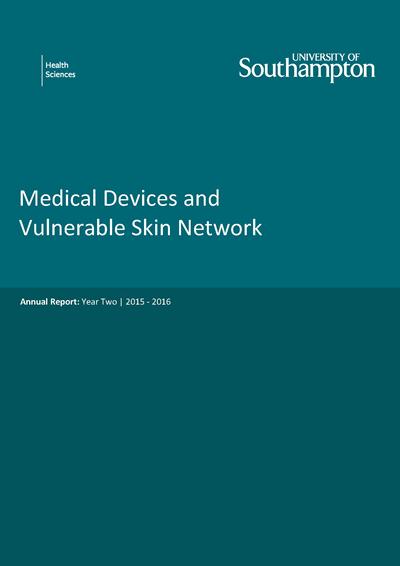MDVSN Annual Report 2015-2016

Our second Annual Report for 2015-2016 for the Medical Device and Vulnerable Skin Network (MDVSN) is now ready for download.
We are pleased to report significant progress this year, which matches the aims of the Network, namely to introduce cutting-edge technologies and scientific understanding in order to reduce the incidence of mechanical-induced damage of vulnerable skin caused by interventional medical devices in various clinical settings.
Highlights include our annual sandpit meeting and clinical workshop, a special session at the Tissue Viability Society in April 2016, as well as a number of presentations as keynote speakers at international conferences and industrial events.
This year, we have continued to engage with clinicians, academics and industrialists to provide a platform for improving the design of medical devices. Several new projects, in the form of work packages, have resulted.
The focus of our activities have also been provided a major boost by the recent announcement from the National Pressure Ulcer Advisory Panel (NPUAP) consensus meeting in Chicago. They have, for the first time, provided an additional pressure injury definition: Medical Device Related Pressure Injury, defined as an injury, which results from the use of devices designed and applied for diagnostic or therapeutic purposes.
We have also attended a significant number of International events and conferences, bringing the MDVSN to new audiences and forging new relationships with partners to collaborate on projects that will deliver the maximum impact for the Network.
We have benefited from continuing support from our two NIHR HTCs, Design for Dignity (D4D) and WoundTec. As an example, they have introduced us to various healthcare companies and groups, such as Technology & Innovation Transforming Child Health (TITCH), which have made a positive impact on expansion and diversification of Network activities. In addition, both HTCs have provided invaluable support to our successful awards to the EPSRC and NIHR.
Thank you for your continued support. By working together, we can continue to raise the profile of chronic wounds arising from interventional medical devices to all stakeholder groups, record device related events and, where appropriate, promote changes in device design.
Further details are available in the Annual Report below.